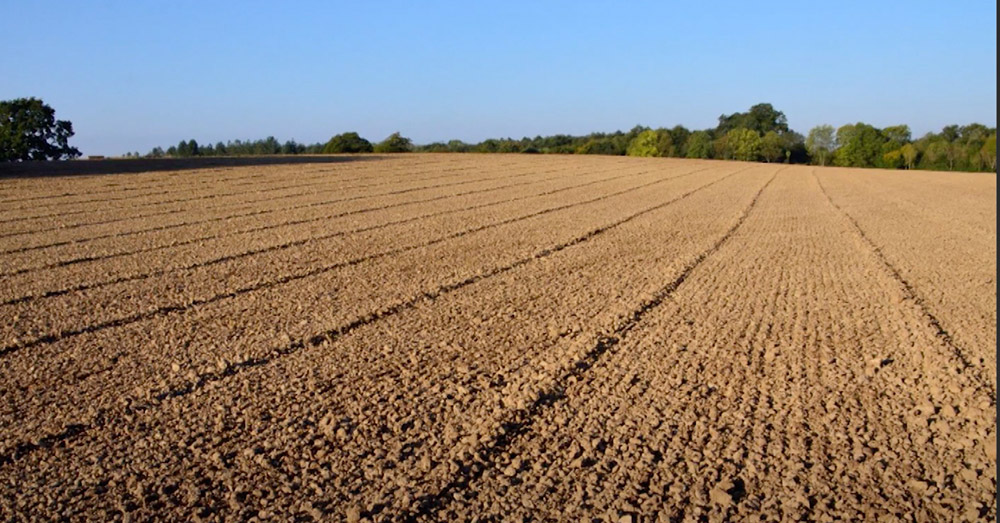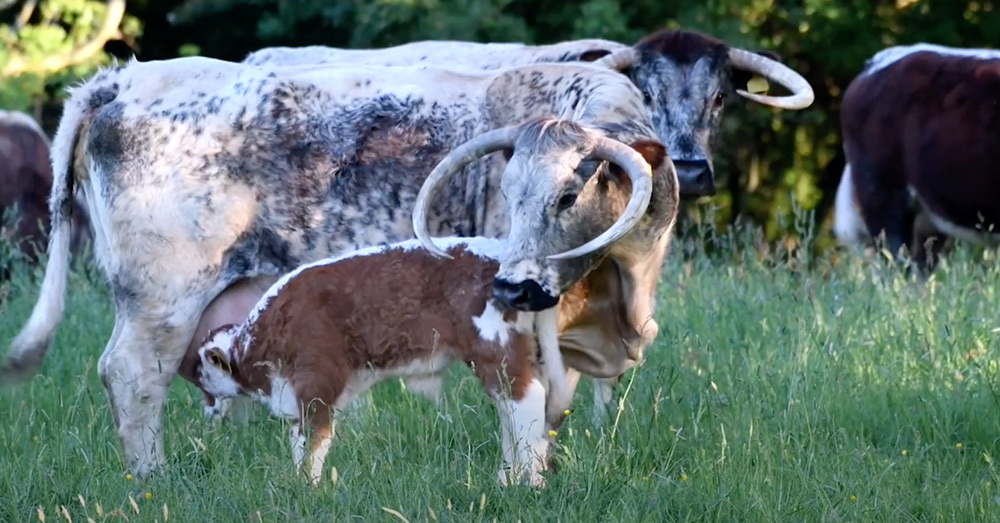
‘Rewilded’ 3,500-Acre Farm In UK Shows Just What Can Happen When Humans Get Out Of Nature’s Way
It’s been hundreds of years since white storks last welcomed new hatchlings in the UK. This summer, several of them were born on the 3,500-acre Knepp estate.
The farm has belonged to the Burrell family for more than two centuries, CNN reports. Owner Charlie Burrell inherited Knepp when he was just 21.
“I came out of agricultural college incredibly enthusiastic about farming,” he said. “We’d been taught that conventional farming can work.”
But after 17 years, Burrell was ready to admit Knepp never made sense as a farm.
“I got to the point when I just felt that I couldn’t go on, because we actually were beginning to lose serious money,” says Burrell. “I needed to change and to change radically.”

Charles Burrell, Isabella Tree and their children at Knepp estate.
Instead of plowing the estate into the ground, Burrell and his wife Isabella Tree are handing over a large portion of it over to new caretakers: the birds, bees, and other wildlife that make their home there.
“We were living in a biological desert,” says Tree. “Now, ecologists are blown away all the time by just the amount of life here.”

The former farm has been rewilded, allowing native species to return.
By simply “rewinding” the rolling pastures and fields, or otherwise doing nothing to maintain it as arable land, Burrell has created an environment where many rare species of flora and fauna have begun to flourish, some returning for the first time in centuries.
Turtle doves, which have experienced a 98% decline in the rest of the UK, are growing in numbers in the tree canopies of the Knepp estate, right next to all five species of owls found in the UK. Tamworth pigs restore biodiversity and act as “ecosystem engineers” by turning over mud with their snouts. Predators like foxes and buzzards keep small mammals and insects in check, while key pollinators are bolstering the native wildflowers, fruits, and berries that the birds feed on.

Tamworth pigs root in the mud, creating fertile biomes for insects.
“We had 120,000 pairs of turtle doves (in the UK) when I was growing up,” Tree told CNN. “We only have possibly a few thousand left. We’re probably the only piece of land in the UK where turtle dove numbers are actually rising,”
It may be too late to save the turtle dove from extirpation in the UK, but Knepp at least demonstrates the simplest and most effective way to conserve many other species: Let them take over.
“It shows the potential that this kind of project has for reversing trends of catastrophic decline,” she says. If this kind of conservation is carried out “on a big enough scale and fast enough, then we could save at least some of the other species from extinction.”

Exmoor ponies run wild at Knepp.
Knepp is still operated as a farm, offering grass-fed meat to London butchers, but it’s far removed from other cattle farms in the UK. Instead of keeping large swathes of land trimmed of anything but long grass for grazing cattle, Burrell has allowed his English Longhorn cattle to become seed distributors themselves. The large animals snag seeds on their fur and hooves on one end of the farm and carry it to the other, fertilizing with their dung along the way.
Nearly every animal on the estate is helping create a more diverse and resilient ecosystem.

Burrell realized tilling the soil for just a few crop species was unsustainable.
Burrell and Tree have saved money on typical farm costs like irrigation and fertilizer, only culling the cattle to prevent overgrazing. They have also invited guests to camp in one of the shepherd’s huts or yurts placed around the farm, offering scenic vistas of wildflowers and thriving forests.
“Rewilding workshops, photography courses, and guided walking tours and safaris that introduce visitors to the teeming wildlife and generate extra income,” CNN reports.

The Knepp estate has been in the Burrell family for over 200 years.
Not everyone thought Burrell’s decision to return Knepp to the wild was a good idea. Even the National Farmers Union maintains that rewinding on such a scale is not economically viable, but other critics have been convinced over the last decade, seeing how Burrell’s now-profitable farm works alongside nature rather than suppressing it.
“There’s a new movement in Britain where we as farmers are collecting together in big groups, sponsored by government, to think about nature,” Burrell said.
Burrell and Tree are proud to be a part of that movement, and are looking forward to seeing its seeds spread.

Longhorn cattle aid in seed distribution, simply by grazing around the estate.
“We had known in a very amateurish kind of way that it would be lovely to get biodiversity back, but we hadn’t really understood the impact it would have on us and how it would make us feel,” Tree said. “It’s just been a complete revelation.”
Learn more in the video below.